Issue #23 - Speed Thrills. Crashes Kill.
Hey everyone!
I’m back with a new edition of our newsletter. In this episode, I talk about the paradox of speed in projects: when accelerating helps us move further and when it only makes us fail sooner. I bring examples like WeWork and FTX to show how growing too fast without solid foundations can lead to spectacular crashes. I also introduce the concept of “strategic speed,” explaining that more important than always going fast is knowing how to balance acceleration, pausing, and even pivoting when the context demands it. With practical reflections and guiding questions, I show how mastering the right pace can be the real differentiator for generating sustainable results.
Listen to the podcast to learn more.
Happy reading!
Ricardo

In This Issue
- When going faster helps us go further — or break sooner
- Breaking the Stereotypes: What Generations Really Want at Work
- How the RACI Matrix Can Save Your Team
- OpenAI Enters the Job Market: LinkedIn Should Watch Out
- AI-Driven Project Management Revolution 2025: Research Results
- Masterclass & Certification Discount
- My LinkedIn Courses Now Available in Portuguese
- Book “Project Management Next Generation” in Chinese
When going faster helps us go further — or break sooner
September is here, and with it comes that constant feeling of racing against the clock.
Investors push for faster returns, markets shift at breakneck speed, crises come without warning, and AI is raising the bar for how quickly ideas must become products.
Project work, in this environment, is starting to look less like a long-distance run and more like Formula 1: the engines roar, the crowd cheers, the drivers accelerate toward glory — but one wrong move and the crash can be spectacular.
That is the paradox of speed in projects.
Sometimes going faster takes us further, and other times it just makes us fail sooner.
We’ve seen this play out in different ways. Startups celebrated for explosive growth end up collapsing just as dramatically.
Take WeWork, once valued at nearly $50 billion, which promised to “revolutionize offices” with coworking spaces around the globe. The company expanded at lightning speed, but its business model couldn’t sustain the costs, and governance problems turned what looked like a rocket ship into one of the most infamous startup crashes in history. Today, after bankruptcy and restructuring, the company is worth less than 1% of its peak — a stark illustration of its dramatic collapse in value.
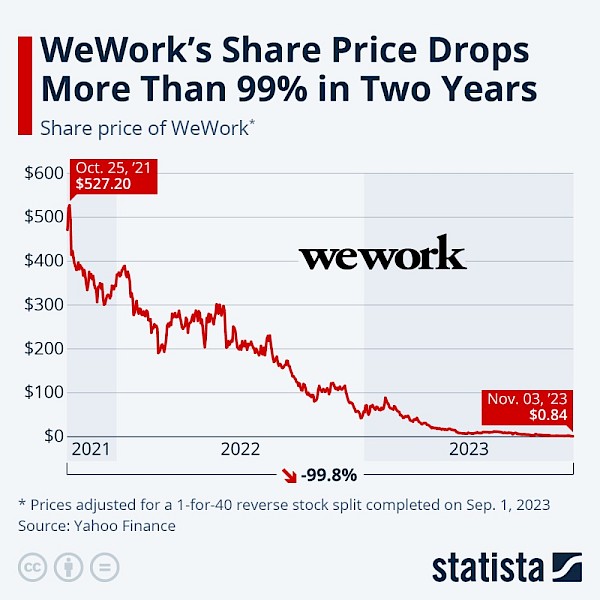
Another example is FTX, the crypto exchange that attracted billions in investments and endorsements from celebrities, only to implode when it was revealed that customer funds had been misused and the company had no solid financial foundation. Both cases are reminders that racing ahead without stability and reflection doesn’t just risk small mistakes — it can end in spectacular collapse.
We cannot forget the public projects, too. Many times, these projects are rushed to meet political agendas and are launched with great fanfare, only to falter quickly because the foundation was too fragile.
There is a temptation to believe that faster is always better, but speed can be a trap.
Failing fast only makes sense if there is space for reflection, learning, and adaptation. Without that, moving fast just means wasting energy and burning through trust.
It’s like making Easter eggs in November: you can be incredibly productive, but if the market isn’t ready, your effort doesn’t matter.
The real skill lies not in going slow or fast, but in mastering what I call strategic speed.
Strategic speed means accelerating when there is a clear window of opportunity and braking when the risks are still immature or poorly understood. It means balancing the pressure to move quickly with the wisdom to pause, test, and adapt.

Projects are not 100-meter sprints. They are long runs. Efficiency comes not from raw speed, but from knowing when to push and when to pause. Being the most efficient doesn’t necessarily mean being the fastest — it means mastering your pace.
This is what I call “Strategic Speed.”
Sometimes it even means pivoting, not just adjusting speed but changing direction altogether when the context has shifted so much that your original plan no longer makes sense.
This idea is closely related to practices such as timeboxing — creating focused cycles of execution — and “what if” scenario analysis, which helps teams test consequences before committing to a course of action. It also depends on leading indicators, those early warning signals like recurring delays or fragile dependencies, that give you time to adapt before risks explode. I have a 5 Minutes Podcast episode where you can learn how to Use What-if Analysis to Manage Projects in Extremely Volatile Scenarios:
Of course, it is not hard to understand how relevant it is to have the “strategic speed,” but how do we know how to find this “magic” speed?
I created a few guiding questions that can act as a compass.
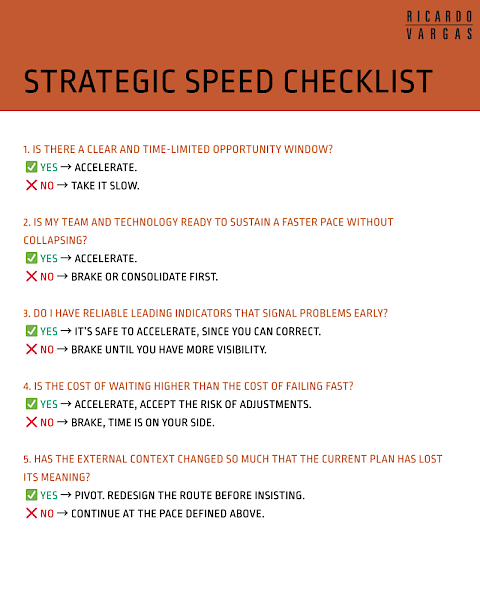
Is there a unique, time-limited market window — like a government incentive, or the chance to launch before a competitor? If yes, acceleration may be the smartest move.
Is the team and technology really ready to handle the pressure of faster delivery without breaking down? If not, it's better to slow down and consolidate first.
Do we have reliable leading indicators? Small signals that warn us of risks early, like repeated delays on critical deliverables or fragile supplier dependencies? If we do, it’s safer to speed up, because we can course-correct quickly. If we don’t, we risk driving blind.
Then comes the trade-off: is the cost of waiting higher than the cost of moving too fast? If delays mean losing the market, speed may be worth the risk; if not, patience buys resilience.
Finally, has the external context changed so much that the current plan has lost its meaning? If yes, the right move isn’t acceleration or braking, it’s pivoting.
And here’s a simple rule of thumb:
- Accelerate when the opportunity is unique, the technological base is solid, and there’s room to maneuver.
- Brake when risks are diffuse, when the team is at its limits, or when pressure comes only from FOMO — the fear of missing out.
- And pivot when the external context has shifted so much that insisting on the old plan no longer makes sense.
Strategic speed is about weighing these factors like a scale: on one side, the cost of rushing — errors, rework, burnout; on the other, the cost of delay — losing market share, losing relevance.
The art is finding the balance point where speed creates momentum instead of destruction.
And context matters: a software team can afford short learning cycles and fast iteration, while a construction project may need deliberate pacing, because rebuilding after a mistake could be catastrophic.
In the end, speed without direction takes us nowhere.
But speed applied with clarity, awareness, and trust can transform projects, giving them both resilience and reach.
The paradox isn’t about choosing between fast or slow — it’s about knowing when to push forward, when to hold back, and when to change lanes entirely.
Sometimes racing ahead will take us further. Other times, slowing down is the only way to avoid breaking too soon.
The leaders who thrive in this new environment won’t be the ones obsessed with raw acceleration, but those who know how to master the rhythm of strategic speed.
So the real question isn’t “How fast can you go?” but “Are you moving at the speed that truly matters?”
Because, in projects, victory doesn’t go to the one who accelerates hardest — it goes to the one who finishes the race and delivers the project and the expected benefits.
What Has Been on My Radar Recently?
Breaking the Stereotypes: What Generations Really Want at Work
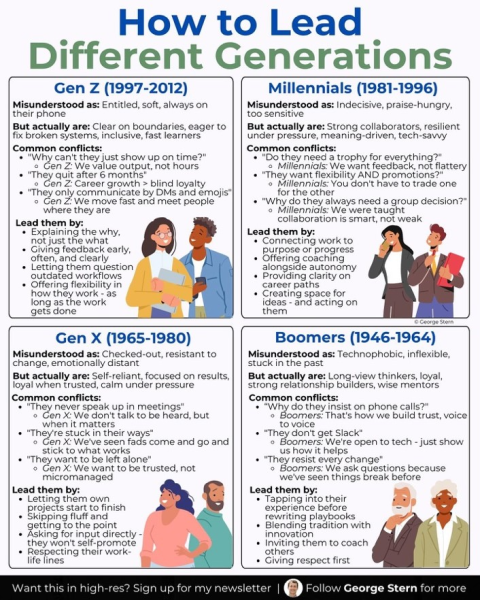
I came across a post from George Stern that really challenged how we think about generational differences at work. I shared it on my LinkedIn, and it became one of my most successful posts in recent months.
We’ve all heard the lazy stereotypes:
- “Gen Z is entitled”
- “Millennials are needy”
- “Gen X is detached”
- “Boomers hate tech”
But when you look closer, those clichés fall apart. Each generation entered the workforce in a different world, with different expectations, values, and definitions of success. And that matters, especially if you’re trying to lead:
- Gen Z: cares deeply about impact and flexibility.
- Millennials: thrive when there’s meaning and collaboration.
- Gen X: wants autonomy and results.
- Boomers: bring wisdom and a long-term perspective.
None of these profiles is “wrong,” they are just different.
Trying to lead every generation the same way misses what actually motivates them.
We’re not managing labels; we’re working with people. And the best leaders take the time to understand what makes each person tick
How the RACI Matrix Can Save Your Team
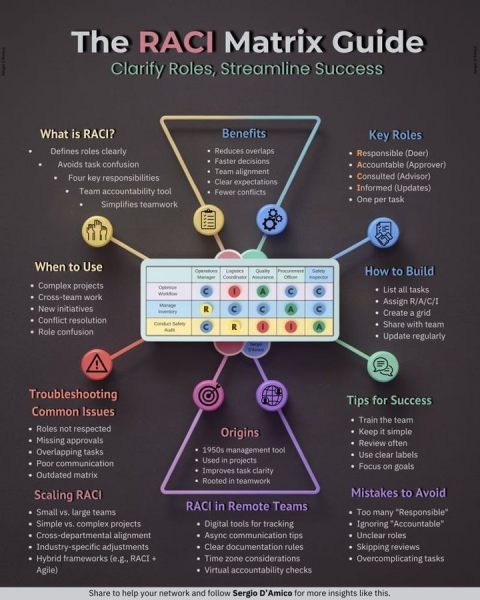
Another item on my radar is an excellent post from Systems For Business. It highlights something I strongly believe in: most teams don’t need more tools; they need clarity.
If you’ve ever asked, “Who’s handling this?” the RACI Matrix might be precisely what your team needs. It helps define roles clearly:
- R (Responsible) – Who is doing the work?
- A (Accountable) – Who is ultimately responsible for the outcome?
- C (Consulted) – Who needs to provide input?
- I (Informed) – Who just needs to be kept in the loop?
Simple, powerful, and it can seriously reduce confusion, delays, and endless back-and-forths. A big thank you to Sergio D’Amico for the great visual that makes this even easier to understand.
OpenAI Enters the Job Market: LinkedIn, Watch Out
We kick off September with staggering news from OpenAI. The leading AI company is developing an AI-powered job platform designed to connect qualified candidates with companies, potentially rivaling Microsoft’s LinkedIn.
The platform will help not only big corporations, but also local businesses and governments find AI talent.
Alongside this, OpenAI is expanding its OpenAI Academy with certification programs teaching AI fluency—from basic workplace AI skills to advanced prompt engineering.
Organizations can integrate these certifications into their learning and development programs, with OpenAI aiming to certify 10 million Americans by 2030.
This initiative comes as AI continues to disrupt the labor market.
OpenAI’s efforts are framed as a way to help people adapt, gain AI skills, and seize new economic opportunities, while strengthening ties with government initiatives for AI literacy and infrastructure.
Quick Announcements
AI-Driven Project Management Revolution 2025: Research Results
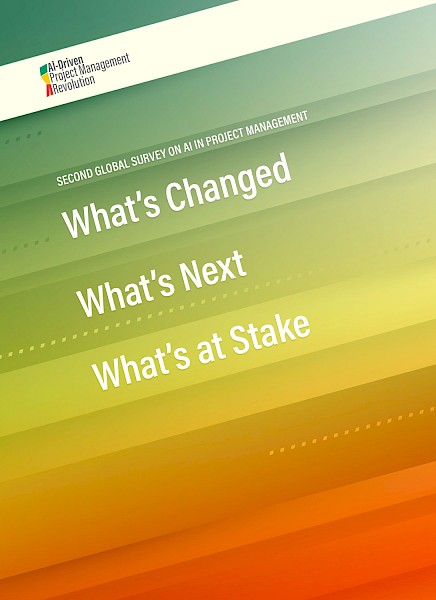
Our upcoming research explores how artificial intelligence is reshaping project management. We're investigating current adoption levels, expected performance impacts, and how AI is influencing the skills and roles of project professionals.
The study examines how AI can facilitate more sustainable, ethical, and innovative project practices. Artificial Intelligence is no longer a distant concept in project management — it’s here, and it's changing how we plan, lead, and deliver value.
We recently completed our global research survey on AI in project management, where we gathered the responses from hundreds of professionals — and the results are finally here.
We will do an EXCLUSIVE webinar for our community of AIPM candidates and credential holders, and masterclass students to share the results firsthand.
This webinar will happen on September 23 at 10:00 AM ET, and all members of our community will receive the invitation in their emails.
If you are not yet a member of our community, you can become a member by registering for our next Masterclass and/or by registering for the AIPM credential here (see below for special conditions and discounts until the end of the month).
The public release of the report will happen on September 29,
We are SUPER excited to share everything with you! Some of the results are truly curious. See you there?
Masterclass & Certification Discount
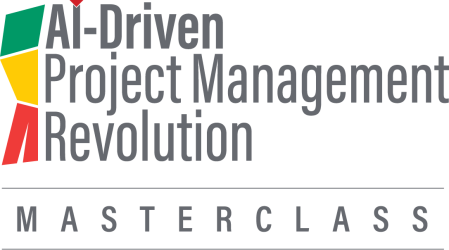
Another super exciting update: our 9th edition of the AI-Driven Project Management Masterclass is coming this December 15 and 16.
This highly interactive experience spans two dynamic sessions, where you’ll work through hands-on exercises, real-world case studies, and practical techniques that will elevate your AI-driven project management skills.
The Masterclass is priced at $499 USD, but until September 29, you can join for $399 USD using the code AISUMMER.

We also offer the AI-Driven Project Manager Certification, a formal credential that validates your expertise in AI-powered project management and positions you as a leader in the field.
The Certification includes prep material and the exam, normally priced at $499 USD, and is also available at a discounted rate of $399 USD until September 29, using the same code.
If you register before September 22, 2025, we will invite you to the members webinar where we will release the main findings of our latest report that will be public on September 29.
I’m thrilled to announce that we are expanding this Certification network to more countries. Very soon, Antonio Nieto-Rodriguez and I will reveal the new regions joining this global community, including Brazil and China. It’s incredible to see how quickly this network is growing and the impact it’s having worldwide.
If you’ve been thinking about advancing your skills, earning a recognized credential, or connecting with a global network of AI-driven project professionals, now is the perfect time. Let’s finish the year strong and enter 2026 ready to lead the next generation of projects.
My LinkedIn Courses Now Available in Portuguese
This is a moment I’m truly excited about.
Two of my courses are now available in Portuguese on LinkedIn Learning: “Estratégias de Gestão de Projetos Sustentáveis” and “Revolucionando o Gerenciamento de Projetos com Agentes de IA”.
And on September 30, my new course about troubled projects will also be released in Portuguese.
These are not brand-new courses, but making them available in Portuguese is a big step toward reaching and empowering even more professionals in Brazil, Portugal, and beyond.
Language should never be a barrier to growth, and I couldn’t be happier that these ideas and practices are now more accessible to Portuguese-speaking learners around the world.
You can access both courses at the links “Estratégias de Gestão de Projetos Sustentáveis” and “Revolucionando o Gerenciamento de Projetos com Agentes de IA”.
Book “Project Management Next Generation” in Chinese
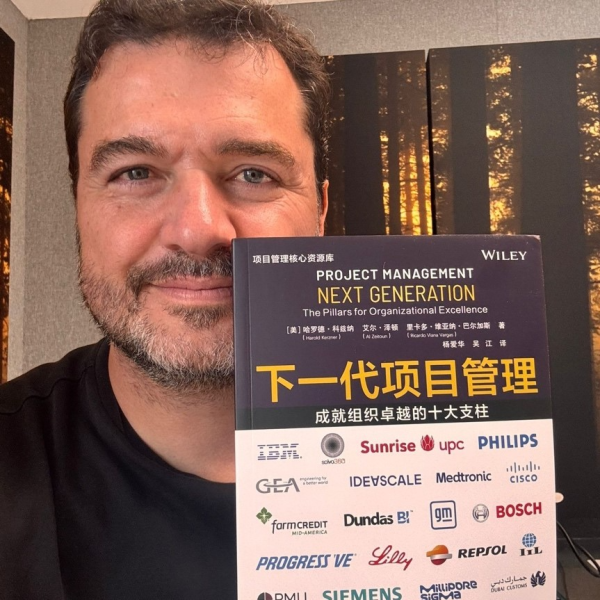
And finally, something I’m particularly proud of: after months of hard work, “Project Management Next Generation” has just been published in Chinese.
This was only possible through a fantastic collaboration with Wiley, PHEI (Publishing House of Electronic Industry), and several outstanding professionals. It’s an honor to see this book reaching new audiences and sparking new conversations around the future of project management.
Plenty of exciting things happening, and this is just the beginning. Stay tuned for more.
Your Voice Matters!
You can also read the previous issues here.
If you have any suggestions, comments, or anything else that will help me make it better, please send a note to [email protected]
Please feel free to share this newsletter with your friends, colleagues, and other people you may find will benefit from it.
They can also subscribe to receive it here.
Thanks for your support, and I hope it was helpful to you.
Cheers,
Ricardo Vargas
